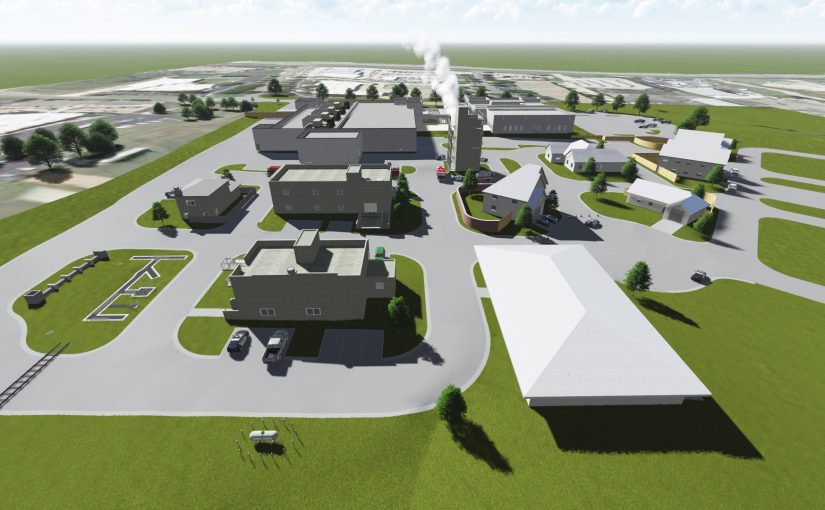The decision to develop a state-of-the-art facility to train police officers, firefighters, and EMT personnel is among the most critical that leaders in any community can make and conversations about such facilities are taking place worldwide.
For years, members of the Fort Worth, Texas, Fire Department trained with outdated equipment, and local police officers performed their training exercises in a cramped and aging facility.
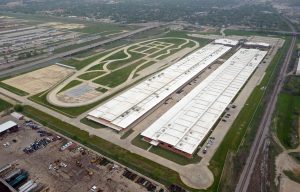
Today, the $97.4 million, 80-acre Bob Bolen Public Safety Complex stands as one of the first shining examples of a new generation of public safety training centers designed and built to help emergency personnel provide better services and keep residents safe.1
Funded by Fort Worth taxpayers and named after the city’s longest-serving mayor (who died in 2014), the Bob Bolen facility houses the combined headquarters and training academies for the city’s fire and police departments. The space within two pre-World War II warehouses is split 50/50 between the departments and has been repurposed into 500,000 square feet of indoor training space. (Fire and police administrative teams share a new and separate 60,000-square-foot building.)
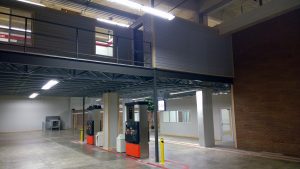
Highlights of the training center include a 30,000-square-foot warehouse for simulating a variety of industrial and hazardous material scenarios with leaking gas, chemicals, smoke, and fire. It also features an eight-story tower and a two-story Class A residential fire training building, a dive training facility, a flashover survival training chamber, a simulated collapsed parking garage for urban search and rescue training, and an emergency vehicle driving course. The outdoor area features are new and not part of the historic structures.2
Every community faces its own set of public safety threats, from flash floods to stranded mountain climbers, based on its geographic location. Thus, the needs that each public safety facility must meet vary significantly. Some facilities might include a shooting range, a vehicular extraction station, or space for swift-water rescue training or tornado response exercises.
When one factors in the threats of mass shootings and other attacks; the bizarre weather events many parts of the world have experienced in recent years; and human-made disasters such as train derailments, fires, and vehicle crashes, it’s easy to recognize the need for functional, up-to-date public safety training facilities.
Because every public safety training site will be different, it’s nearly impossible to cite potential project costs. However, cities will see a return on investment in the form of saving hundreds of thousands of dollars in annual travel expenses, training certifications, liability, and per diems for public safety officials who no longer need to go elsewhere to receive and maintain certification requirements.
Committing to a public safety training center also sends the message that local leaders take residents’ safety seriously. With such high stakes, it’s critical for the initial planning phase for these facilities to be as thorough as possible. To ensure that a new public safety training facility meets a particular community’s needs, it’s essential to bring in experts early on—both to ensure success and to confirm that the new building meets all mandated federal, state, and local certification standards; is sited appropriately; and includes all necessary components. Thorough preparation can also help identify potential partners or private groups to provide financial support for the project.
Building Essentials and Cost Considerations
Public safety training centers can come in multiple sizes with varying degrees of scope. A small “training facility,” for example, might be limited to classrooms and a firing range. A full-scale “tactical village,” such as the Bob Bolen Public Safety Complex, can offer expansive versions of those two components along with an actual neighborhood of building types that mimic those existing in the local community, such as a bank, a convenience store, an apartment building, and private homes on fenced lots. A tactical village can serve as a training site for fire and EMT professionals, too.
Often, a community planning a public safety training facility makes use of existing structures, such as a closed military facility with barracks, support buildings, and roads or, as in the case of the New York City Police Academy in College Point, Queens, a former municipal pound for towed vehicles.
Many facilities are built to mimic their surroundings, and facilities can be elaborate affairs with handsome facades or appear plain and inconspicuous. In communities with tight budgets, a single training tower or small shooting range might be sufficient. One building with one or two training elements can still benefit an agency and the community.
A common element of public safety training facilities is at least one centrally located classroom that allows recruits to leave the classroom for an exercise and return to it for immediate feedback and discussion. Often, classrooms will be co-located with a similar structure, featuring long corridors that might serve alternately as an apartment building, office building, hotel, or school.
How instructors will observe scenarios is an important early question. In Fort Worth, much of the tactical village is re-created indoors so that instructors can observe from above on catwalks.
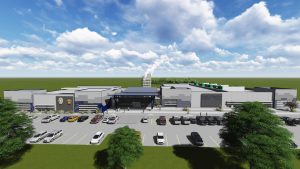
In Round Rock, Texas, where a $29 million, 50-acre outdoor training center is currently under way, recruits and observers will be able to navigate an actual outdoor neighborhood of buildings that will provide a range of suburban locations similar to the ones they will encounter in real-time situations in and around Round Rock.3
When budgets permit, an emergency vehicle operations course (EVOC) can prove to be a vital component. The EVOC concept simulates realistic driving conditions—officers involved in a chase or firefighters racing to a fire. Officers and other first responders can practice handling turns and learning the limits of their vehicles in a safe and controlled environment—while also extending lessons from driving to other tasks. In Round Rock, the EVOC likely will involve a small city grid layout, while in Fort Worth, the EVOC is adjacent to the shooting range, allowing for seamless simulations of vehicle to weapons-out, live-fire training. Such exercises are critical for practicing various scenarios that require participants to make decisions while under extreme pressure.
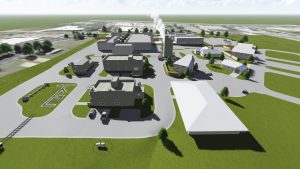
Round Rock’s indoor 50-yard shooting range will span 12 lanes and give officers the opportunity to fire from up and down the range, depending on the situation, with turning targets within each lane or a running-man target that runs the entire length of the bullet trap.
One underappreciated design aspect of training centers is the need for proper acoustics. Whether engaged in pistol practice from 25 yards or shotgun practice 3 yards from the bullet trap, officers (even when wearing ear protection) are in danger of suffering harm during simulations. Thus, consideration of acoustic treatments to “soften” the noise is essential. Likewise, the addition of low-cost options such as variable lighting controls can accommodate weapons deployment in nighttime simulations.
It’s important to consider additional costs that can accrue from very basic needs, such as the need to provide strong, consistent laminar flow of air through the shooting range to prevent airborne contaminants from accumulating there, or the use of armor plating along the bullet trap.
In a “burn village” fire training facility, the determination of using water or foam for simulated firefighting must be made early on, as the discharge costs are significantly different. Although foam is recommended because it more effectively smothers fire molecules, it also must be treated and collected, unlike water, which can easily drain and dry. If plans call for foam, it’s best to involve a local environmental specialist in the process.
Foam and other specialized equipment needed for fire simulations (including high-pressure water cannons, burn props, and multiple-story buildings for aerial ladder operations and high-rise firefighting) can be prohibitively expensive and must be considered prudently. In a fire training facility, simply protecting building elements from degradation due to the high heat produced regularly adds significantly to overall building cost.
Tactical Moves
Once community leaders have made a commitment to fund and construct a public safety training facility, what’s next?
Although the long-term financial savings associated with such a building and the subsequent increases in public safety measures will help sell the building to the public, many constituents will require reassurance that the facility will be used to its fullest extent.
To that end, cities or agencies should identify potential municipal partners or private groups that could provide financial support by renting specific areas of the facility, such as the shooting range. In southern California, the private Los Angeles Police Revolver and Athletic Club has long owned the situation simulation village at the Los Angeles Police Department Academy in Elysian Park, which is staffed by Los Angeles Police Department employees.4
Regional training facilities have been developed in some locales in partnership with (or simply by) educational institutions, most typically community or technical colleges. The mutual advantages of partnering with a local college are numerous, beginning with the need for both entities to attract recruits. For instance, the Hays campus of Austin Community College in Kyle, Texas, is adding a state-of-the-art facility that will enhance the college’s decades-long enrollment and education of first responders, for whom they offer entry-level fire service training and programs for current firefighters seeking a degree and ongoing certifications in partnership with the Austin Fire Department.
In the United States, colleges are also a natural fit with the various layers of government that all must be in compliance with National Incident Management System (NIMS) standards for coordinated communication and response to acts of terrorism or natural disasters. Failure to comply with these standards results in loss of federal funding. Federally mandated scenario-based training under NIMS has, in fact, served as an important impetus to create joint-use training facilities, which potentially put expensive technology and resources within the reach of even small departments.
In addition to identifying potential partners, cities and organizations should be transparent with the public regarding facility progress, from the early stages of planning to the grand opening and beyond. After all, residents are most likely paying for it. Stress that raising the level of local training is based on real-world incidents and first responders’ training at the facility will help keep residents safer than ever before.
Also, reiterate that a public safety training facility is different from any other project a community undertakes. Everyone (directly or indirectly) will benefit from this building in the form of a more response-ready community.
Notes:
1 Jamie Manning, “New Fire and Police Training Center Opens in Fort Worth,” The 109, September 18, 2015.
2 Brinkley Sargent Wiginton Architects, “Bob Bolen Public Safety Complex.”
3 “City Breaks Ground on New Public Safety Training Facility,” Round Rock Texas, November 15, 2016.
4 LAPRAAC, “Home.”


